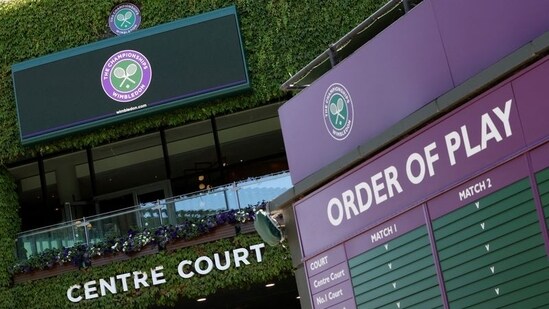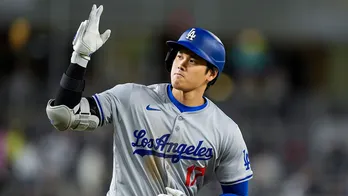The point(s) of Wimbledon
It’s that time of June which means Wimbledon’s coming – in its eye-pleasing logo-free, splendiferous cornucopia, strawberries creamed, accents plummy, the landscape a soothing blur of white on green and purple.  PREMIUM
PREMIUM
Except this year, Wimbledon will be conducted without Russian and Belarusian players or ranking points. Those issues are joined at the hip and have led to some sniping in the higher reaches among the sport’s elite.
Former world No 1 Naomi Osaka said the absence of the ranking points had made her rethink about entering Wimbledon. “I’m not sure why, but like, I feel like if I play Wimbledon without points, it’s more like an exhibition. I know this isn’t true, right? But my brain just like feels that way. Whenever I think like something is like an exhibition, I just can’t go at it 100%...”
Two-time champ Andy Murray was quick to respond that Wimbledon could never be an exhibition with a reasonable argument. That no one remembered ranking points in any of the sports he followed—like golf and football—but everyone remembered who won or didn’t win. Osaka’s best at Wimbledon is 3rd round in 2019, the last time she was there, clay and grass not suiting her game. An achilles injury will have her miss Wimbledon second year running.
This is not the first time Wimbledon has banned players on the basis of nationality—it did the same for German and Japanese players for four years just after the end of the second world war. The first German to show up in their draw was Gottfried von Cramm in 1951.
The zero-ranking has left many players unhappy—Murray, Novak Djokovic, Sloane Stephens, Ons Jabeur, Dominic Thiem among them. After losing in the first round at Roland Garros, Frenchman Benoit Paire called his own press conference and thundered, "I want to know if the ATP wants to protect the players or Russia?" He did later calmly confirm, “I will go to Wimbledon to get my prize money, as I would for an exhibition tournament.”
From the outside, the bans and stripped ranking points have trimmed the draw— two of the men’s top 10 are banned plus one, Alexander Zverev is injured and unable to play. Wimbledon’s Roger “Rex” Federer, who is nursing age and injury, will also be missing for the first time since making his debut in 1999. Among the women, three of the WTA top 20 stand banned—Wimbledon 2021 semi-finalist world No 5 Aryna Sabalenka, No 13 Dariya Kasatkina or world No 20 Victoria Azarenka. Former Wimbledon finalist Eugenie Bouchard has pulled out in order to protect her injury-exempt ranking status. Thiem also has chosen to give Wimbledon a miss as his comeback after a nine-month layoff due to a wrist injury has not gone well.
But it does not mean Wimbledon '22 is minus its usual drama series plot lines. Rafa Nadal is threatening to tackle his least favourite surface on one leg aged 36, seeded if you don’t mind No 2. While the rankings may be zero, nobody has forgotten that the Grand Slam titles will still count. Nadal is at 22, Djokovic is 20 and Serena Williams is back as wildcard, seeking to equal the all-time Slam record, 24. She hasn’t played a competitive tournament for a year after retiring hurt from Wimbledon ’21. Doubles in Brighton doesn’t cut it, but what do we know.
In stripping rankings points off the oldest Grand Slam in the world, WTA and ATP have put their money where their mouth is – all for one and one for all as player organisations. WTA’s position on China in the light of the Peng Shuai affair was exemplary and here both WTA and ATP took control of the precedent professional tennis needed to set. Had they fallen into line with Wimbledon, they would have ceded ground the players needed to own. This even while their differences with the Novak Djokovic-led independent Professional Tennis Players Association (PTPA) do exist, around the finances and active players’ voice in decision-making.
In this debate, who’s to know exactly what tennis means to its most elite players or what drives them. But as fans we bring our own interpretations to it. For many in India, Wimbledon is certainly is where it all begins - our interest and first sighting of world-class tennis. In the 1980s on black and white screens, with Indians rapidly placed in its context, in awe of the past and in mourning of the present. Wimbledon knows how to drown the first-time watcher and the die-hard tragic ever year—in its history, its sometimes baloney ‘tradition’ (bowing to the royal box in the 21st century, honestly?) and then into the overwhelming wild theatre of its tennis.
Just like the first over of an important Test series must be watched from no matter which time zone in the world, so it is with the 6.30 pm telecast of a Wimbledon first round match on the last Monday every June. From Centre Court, even if it means seeing some poor unseeded chump getting bagelled. This year for sure, Roger Rex and the whimsical magical Medvedev will be missed. And maybe even the idea of ranking points too. The ghastly injustice of punishing Russians and Belarusians will sting. But only until the first serve cracks off a racquet. After that, it’s Wimbledon, it’s on and we’re hooked.
Experience unrestricted digital access with HT Premium
Explore amazing offers on HT + Economist Start 14 Days Free Trial Already Subscribed? Sign In
Disclaimer: The copyright of this article belongs to the original author. Reposting this article is solely for the purpose of information dissemination and does not constitute any investment advice. If there is any infringement, please contact us immediately. We will make corrections or deletions as necessary. Thank you.







